10 Knock-Off Superheroes That Took on Amazing Lives of Their Own (Besides Watchmen)
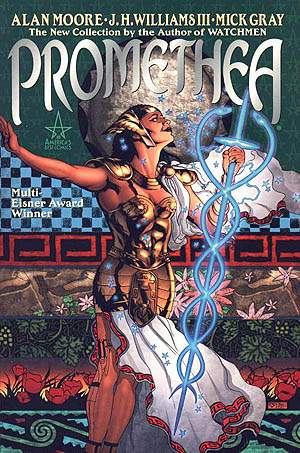 |
From time to time, articles come up about fictional characters who are clearly derived from other characters. In the realm of super heroic comics, that “time to time” is increased exponentially. One of the currently best known “bet you didn’t know that” bits floating around is that Alan Moore’s landmark miniseries Watchmen is based off of a set of characters that DC Comics bought from Charlton Comics two years before they went out of business. Alan Moore was going to do a dark story that would have ended things in a place with nowhere left to go for the characters, but DC still wanted to use them later so they asked Moore to come up with a new set of characters and he based them pretty close to what he’d started with. Then Watchmen became one of the biggest comics of the ’80s and changed everything, etc.
While it’s easy to throw hate at the feet of writers and artists who create characters so similar to what’s already around, a closer look can yield some examples that bear interesting results. When creators play around with the building blocks of what makes a character cool and interesting and add in some pieces of their own, a story can emerge that is both an intriguing exploration of the original character and a compelling tale in and of itself. Let’s take a look at the very best of the best.
10. Squadron Supreme
Published in: 1971
Knocked from: The Justice League of America
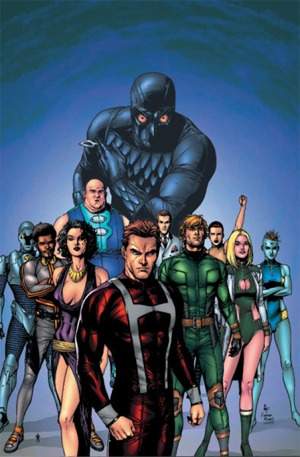 |
The Squadries (as no one has ever called them) are a stand in for the Justice League and initially seemed like a way for Marvel to crack some jokes at DC’s expense. It was also a method to simulate JLA vs Avengers stories without legal hassles from the distinguished competition. Over time they became one of those oddball elements of the Marvel U that are just sort of there, kind of like Howard the Duck and the Savage Land, another quaint bit of lore that writers could pull out of the far corners of the sandbox to throw a curveball at readers.
That changed in a huge way with Supreme Power by J. Michael Straczynski and Gary Frank. Picking up with with a new origin for Hyperion (a.k.a. Superman) that started with the Ma & Pa Kent stand-ins being murdered as part of a government cover up, this re-imagining of the team is the first time that they were approached as independent characters rather than “another version of ___.” By making the characters’ stories less dependent upon (though not completely removed from) their counterparts and linking them together with the ship that sent Hyperion to earth as a catalyst for other superpowers the individual character arcs and combined interactions took on a fresh feel.
It’s the literary equivalent of modifying a classic thanksgiving turkey recipe with a Jamaican Jerk Chicken list of ingredients. The story sprawled out to 18 issues, which makes it one of the lengthiest origin stories, as it ended with the formation of the actual team before rolling over into a new Squadron Supreme ongoing series. When that series eventually crossed over with the Ultimate Universe it felt like an organic outgrowth of the elements in place that had never been present in any of the original team’s appearances in the original Marvel U.
9. Supreme
Published in: 1992
Knocked from: Superman
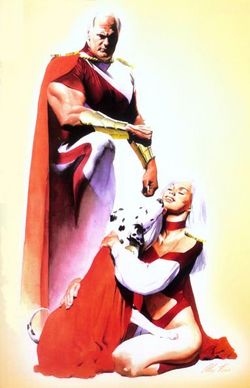 |
Supreme is one of Rob Liefeld’s many creations at Image and or Awesome comics from the ’90s, and meaning no insult to the man, it must be said that a good many of the characters he created are clearly derivative of other more popular characters (as will be seen twice more on this list). The interesting thing about Liefeld’s knock-offs, though, is that in the right set of hands they’ve been known to become engrossing works of genius. He’s like a guy who opens up a fast food joint imitating Burger King or McDonald’s then hires gourmet chefs to work the grill.
Case in point, his substitute Superman with the dead bang obvious name of Supreme, who had so many different origin stories and contradicting plot elements that no one could keep it straight. With issue #41, Liefeld handed him over to living legend Alan Moore and let him cut loose. The result was a fusion of homage and deconstruction that lacked Moore’s then-signature bleak worldview . Supreme: Story of the Year opens with the character having recently returned from outer space after an absence of 30 years. He’s soon taken to a city full of past incarnations of himself, where it becomes apparent that every time he’s been revamped, the older versions have gone on to an afterlife of sorts.
The rest of the story follows Supreme as he reconnects with a world that’s moved on but is happy to have him back in it. As he recalls his origin – which has already been acknowledged to be fluid and prone to alteration – the tale becomes a looping roller coaster exploring the tropes of classic golden and silver age superheroes. The pieces of self-referential nostalgia combine to form a tale that would still be entertaining for someone from an alternate universe that had never heard of Superman.
8. Queen Maeve
Published in: 2006
Knocked from: Wonder Woman
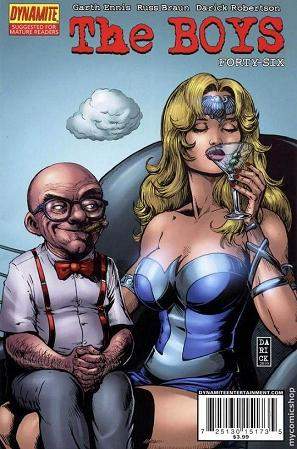 |
Garth Ennis and Darrick Robertson answered the question “Who Watches the Watchmen” by creating The Boys, their darkly vicious takedown of the superhero genre that was one of the best examples of bitter humor tapping into darker truths about the world at large ever put to page. The cornerstone of the series’ exploration of how big a pack of assholes most superheroes would likely be in real life, was the Justice League stand-in The Seven. While the characters offered a dark and sinister take on how humans would be likely to abuse superhuman powers, most of them weren’t all that interesting in and of themselves.
The only member worthy of a place on this list is Queen Maeve, the Wonder Woman replacement who took a much different path than most of her spiritual siblings (some of whom will show up later on the list). Instead of being a joke on the stoic badass warrior woman cliche, Maeve is a world-weary alcoholic who’s so burned out on everything that being a superhero has to offer, she’s stopped caring that she’s become something of a joke. Upon meeting newest team member Starlight and being told that she’s a lifelong inspiration to her, Maeve shrugs her off with an acerbic quip while sipping her ever present Martini.
By exuding the sort of numb depression that might overtake someone who’s spent decades being an icon of super womanhood, Queen Maeve exemplifies the dark idea of Ennis’ exploration of abused power in a far superior manner to the over-the-top violence of the Homelander. She demonstrates the notion that with enough time, even depravity and debauchery can become boring. When her backstory is delved into later in the series establishing her motivations and the reason for her apathetic attitude, she takes on a depth worthy of the Greek tragedies that inspired Wonder Woman herself. While Maeve remains in the shadow of Wonder Woman, she also offers a morose reflection of the Amazonian Princess’ role in a way that no one else does.
7. Omni-Man
Published in: 2003
Knocked from: Superman
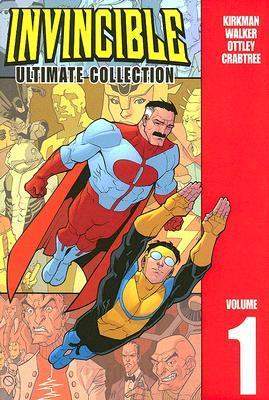 |
There’s really no way to explain why Omni-Man belongs on this list without spoiling the biggest turning point of Robert Kirkman’s Invincible. So if you haven’t read the series, go do so now. Seriously right freaking now. Okay, I realize that you might not have enough time to go grab a copy at this moment, so at the very least skip this entry and come back to it after you read the first few volumes of Invincible.
SPOILERS AHOY!
Imagine for a moment if Lex Luthor were right about Superman. What if he were an alien invader hell bent on conquering earth? This is the central idea explored in the series but done so through the eyes of Omni-Mans’ son Mark, who is just starting his own heroic career under the name “Invincible”. Caught between love of his son and duty to his warmongering race of “Kryptonians-by-another-name,” Nolan Grayson balks at killing the kid and flees the planet headed for deep space.
Over the course of the next several story arcs, Nolan pops up again seeking to redeem himself for his horrible misdeeds. In the meantime he’s found a new wife among a species of insectoid aliens that live their lives in months rather than years. The two have a hybrid son who serves as an interesting exploration of kid sidekick characters when his own powers kick in.
Omni-Man breaks interesting new ground in exploring the Superman archetype by focusing on the aspect of parenthood that is only ever shown as an alternate reality for Clark Kent/Kal-El.
SPOILERS OVER!
6. Glory
Published in: 1993
Knocked from: Wonder Woman
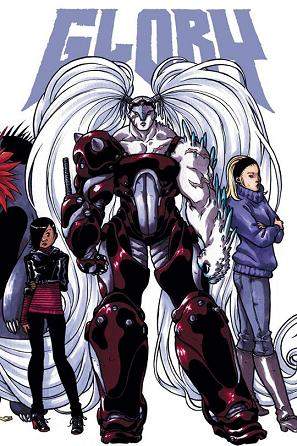 |
Another Liefeld character that was reshaped from a knock-off into a genuinely compelling character, Glory is the Wonder Woman to Supreme’s Superman. In the ’90s she had a typical cheesecake look common to super-heroines. Under the pen of Ross Campbell (creator of Wet Moon), she was given a much more muscular physique befitting a woman with super strength. Under the keyboard of Joe Keating, her backstory was shifted so that she was the half-breed daughter of two alien races at war since time immemorial.
Her looks and attitude being altered so much left a character that isn’t immediately recognizable as “Wonder Woman by another name” until the story is delved into. The details paint a lovingly affectionate look at the many faces of Diana of Themyscira. Told through the eyes of a young woman plagued with dreams of Glory’s past and possible future, the revamped series has a dark and ominous tone that manages to stand apart from most of the “dark/ominous” stuff from the last decade. The tone isn’t a bandwagon jumping gimmick – it’s a natural progression of a story that the reader is plopped down into the middle of.
The strength of the Keating and Campbell version of Glory is the way her story is told through the eyes of other people as a primary approach. It’s a technique that works well in Kurt Busiek’s Astro City and is done just as effectively here, with an intimate and personal focus on a central character rather than an expansive cast. There are a lot of other things to like about the new iteration including the gorgeous looking monsters.
Warners/DC should seriously consider getting Ross Campbell to draw an Elseworld story of Wonder Woman and put Joe Keating to work on the screenplay for her forth coming movie, but even more than that, some movie studio should turn their version of Glory into a box office success that WB is forced to top. Sadly, that seems unlikely to happen anytime soon because #34 was the final issue of Keating and Campbell’s run (which for some strange reason began with issue #23 instead of starting over even though it’d been almost 14 years since #22 was published).
5. Promethea
Published in: 1999
Knocked from: Wonder Woman
 |
Another example of why Alan Moore is one of the best writers in the medium, this time from his ill-fated ABC imprint from Wildstorm. Unlike a lot of people forging a Wonder Woman-esque character (including Keating and Ennis), Moore went back to the well of cultural ideas that original creator William Moulton Marston drew from. He then surveyed the region, picked a spot within line of site to Moulton’s well, and started digging his own. Moore dug deeper, and then took the well water and put it through a filtration system of neo-pagan mysticism which resulted in a character more connected to the current cultural heartbeat of western society than Wonder Woman has been since the 1960s or ’70s.
That may sound like a bit of overhype; it’s not. Promethea is a character who symbolizes the constant struggle of societal elements both masculine and feminine to redefine what a woman is and should be. She takes on a new form every generation or so that is linked to a woman of that era who imagines her into the real world. One of the most fascinating iterations touched upon is a flashback to the Medieval Crusades when there was one Promethea for Christians and another one for Muslims.
This story point is naturally tied into events transpiring around the current Promethea, who is tied to central character Sophie Bangs (whose name sounds kind of like a woman from a James Bond movie) a college student researching the legend of Promethea who ends up becoming her newest incarnation. Her duties result in her taking a journey through the 10 realms of the Kabbalah, and climaxes in an apocalyptic event on Earth that is a good dealmore positive than any fictional end of the world scenario since Gaiman and Pratchett’s co-written farce Good Omens. The 5 volumes of the series add up to nothing short of an actual magical working, done via the medium of comics targeting the mind of the reader.
4. Quicksilver
Published in: 1964
Knocked from: The Flash
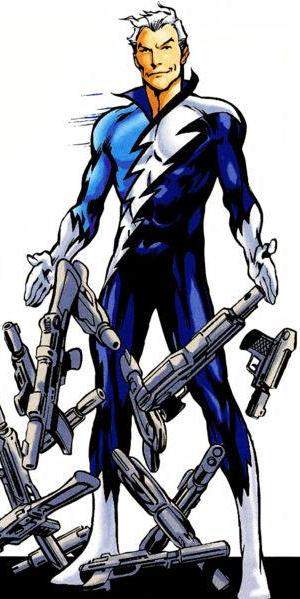 |
In a few years if DC/WB release a movie called The Flash, you can be sure that at least a few people will say “He was okay, but he’s not as cool as Quicksilver.” When X-Men: Days of Future Past premiered in theaters last year, a lot of people got to see one version of “Marvel’s Flash.” Since Avengers: Age of Ultron dropped and Marvel Studios’ version got more than a 2 to 5 second cameo, people can argue over which version of the character was better and which was worse.
With the TV show about “The Fastest Man Alive” having recently hit the air, another super speedster might feel very “been there done that” to genre fans that haven’t read the comics, but the ones who are up on their X-Men history (or that recall the cartoon from the ’90s or the other cartoon from the early ’00s) already have an inkling of what sets Marvel’s guy apart. While their powers and costumes are very similar, Pietro Maximoff, simply put, has the better back story by a country mile. As the son of Magneto with a sister full of potentially earth shattering powers, he’s had a rough go of life for several decades. Pietro’s time with the Inhumans is a treasure trove of story potential that explores the pitfalls of marrying into high society when you come from the lower classes. Those three elements combine to make ol’ Pete thrice as complex as Barry Allen, Wally West, Jay Garrick, Bart Allen or whoever else has held the name “The Flash.”
There’s another interesting thing, of course. Instead of being a legacy hero (which aren’t as prevalent in the Marvel Universe) Quicksilver is a singular character who could not be replaced. Sure another character could take the name, but without the rich and layered life history it wouldn’t be the same. Meanwhile Flash’s histories of the “speed force having people” are kind of hard to keep straight without at least a crash course in super-heroic history. By A) Not needing any cliff notes to understand him and B) offering up a compelling personal life that would be engaging even without super powers, Quicksilver is more intriguing than any of the scarlet speedsters. The Flash is currently the most recognizable of the two, but that won’t necessarily last for long. If that seems absurdly over-optimistic, try to imagine going back in time to early 2006 and telling people ” Within 7 years, Iron Man will be drawing a bigger crowd to movie theaters than Superman.” As crazy as you might sound, you’d still be right.
3. Captain Marvel/Shazam
Published in: 1940
Knocked from: Superman
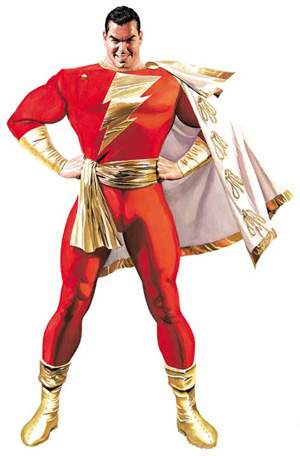 |
The Big Red Cheese is often overshadowed by the real life struggle of of the company that birthed him. When Fawcett Comics unveiled Captain Marvel (not to be confused with the half dozen characters from Marvel that share the same name) DC filed suit claiming him to be a plagiarized rip-off of Superman. The case, which dragged on for years, set a precedent that has had a lasting impact to this day (and is indeed part of the reason this list even exists). It was decided by the courts that a character can be obviously derived from another one so long as they’re juuuuuuusst different enough to not be a total rip-off.
Although Fawcett won the day in court, the financial cost brought them to ruin. When they went out of business, DC ended up purchasing the imitation that they’d once tried to snuff out. They’ve put the character to good use over the years, most expertly under the brush of Alex Ross and later under the pencil of Jeff Smith. The fact that these two fan favorite artists who are so in demand each focused some creative energy doing projects with BiIly Batson and his alter ego demonstrates his enduring legacy as one of DCs lesser known but still vital characters.
While many casual eyes might glance at Captain Marvel and write him off as a dime-store Superman substitute, a more thorough look will instead reveal him to be cut from a much different cloth. It’s much like the core difference between Star Trek and Star Wars. Supes is an idealized icon of science fiction, but Shazam (as he’s known nowadays) is mythical magic repackaged for a modern age. The novel trick of having him be a young boy that can turn into a fantastic hero is the most enduring element. Shazam encapsulates the desire of so many young kids who grew up reading superhero comics. And while Supes has evolved and changed with the times ever so slowly and subtly, Shazam still feels like the same Big Red Cheese he was back in the old days.
While I could talk about the allegedly upcoming movie that will spotlight him, let’s not count our DC chickens before their parents have hatched. Instead, let’s focus on a Captain Marvel who is much likelier to be up on the movie marquee in a reasonable amount of time…
2. Captain Marvel/Carol Danvers
Published in: 1968
Knocked from: Captain Marvel/Mar-Vell
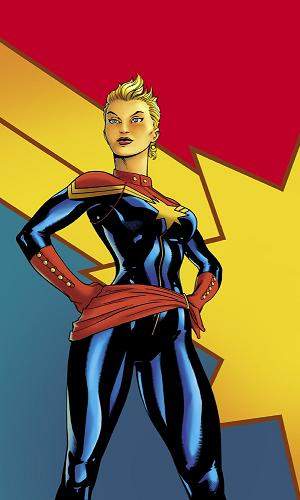 |
Even though she’s only recently added the word Captain to her superhero name, Carol Danvers is the most enduring and recognizable character on the list of people in the Marvel Universe to bear the name. Beginning her superhero career under the name Ms. Marvel, Carol was the female version of Captain Marvel (the Mar-Vell one) in the tradition of characters like Supergirl and Batgirl. While her name was above-par with the ‘Ms.’ identifying her as a more of a woman than a girl, she was still very much in the shadow of her male counterpart.
That began to change after Jim Starlin’s classic story where Mar-Vell died of cancer. In the ensuing years as the ‘Captain’ title changed hands ever so often, Carol maintained a steady presence on the fringes of the Marvel universe. She underwent a few name changes (such as Warbird and Binary) and shifted from the Avengers crowd into the X-Men scene and back. During that time she became a known figure among Marvel readers who was often more recognizable as “Carol Danvers” than any of her various monikers.
Under the pen of Brian Michael Bendis, Ms. Marvel became one of the heavy hitters in the Avengers titles to such a degree that after the returned Captain Marvel turned out to be a skrull impostor (or a clone or something) and got killed off, the only logical person to take the name was the marvelous Ms. Danvers herself. Now that it’s been confirmed that she’ll be the lead in a movie of her own, Carol is getting a shot at possibly leapfrogging her less enduring male counterpart for a chance to dominate the box office as the most admired female hero on the silver screen. Think that idea sounds crazy? Consider the following…
With the summer before last having had the once unthinkable event of a movie about Iron Man outperforming a movie about Superman, it’s not inconceivable that Captain Marvel could one day rival and perhaps even defeat Wonder Woman as the most popular super heroine, especially if she’s introduced in her own movie as the lead character as opposed to WB’s confidence lacking move of shoehorning one of their three most famous heroes into the supporting cast of Batman v Superman before spinning her off into a separate film. If you asked any nerd worth his or her salt ten years ago who would have the better chance of being a box-office success, the answer would have been Wonder Woman. The cinematic landscape has changed so much since 2004, though, that no one currently knows who will take the crown. Looking at her deep and rich history, plus the nifty element of her being a woman in the military (which we have no indication that her direct competitor will be), I’m putting my money on Carol.
1. Deadpool
Published in: 1991
Knocked from: Deathstroke The Terminator
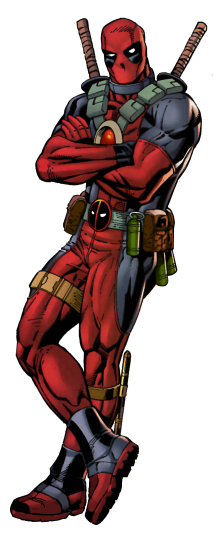 |
Probably the best example of a character beginning as an imitation before becoming much more. It’s worth noting that a lot of younger superhero fans may not be aware that Deadpool was initially a knock off of Deathstroke, and for that matter they may not even be familiar with Deathstroke at all.
Created by Rob Liefeld and Fabian Nicieza in 1991 during their run on New Mutants and X-Force, the character was such an obvious imitation of the Teen Titans villain that Nicieza named him Wade Wilson as a nod to Deathstroke’s real name (Slade Wilson). For the first few years of his existence he was a vicious, cold blooded assassin taking on heroes like Cable and Wolverine. That changed in 1997, when Joe Kelly and Ed McGuinness were put in charge of the first solo series for the man who would become known as “the Merc with a Mouth”.
Under Kelly, Deadpool became an absurd parody of then popular trends in superhero comics and started to take shape as the bizarre, fourth-wall breaking weirdo he’s known as today. By performing a function that was lacking elsewhere in the genre (bear in mind that this was during the time that Spider-Man comics were becoming such a depressing mess that readers were leaving in droves, and while he’s always been handy with the jokes, his sense of humor was never anywhere near as bizarre as Wade’s has become), Deadpool achieved enough recognition to attract a cult following among fans that has grown over the last decade to the point where his inaccurate portrayal in X-Men Origins: Wolverine ended up being one of the biggest complaints about the movie. Today his status and popularity far outstrip the character who inspired him, and serves as the best proof that Rob Liefeld has a knack for creating generic characters that other creators are able to take to new and unexpected places.
Honorable Mention:
Power Girl
Published in: 1976
Knocked from: Supergirl
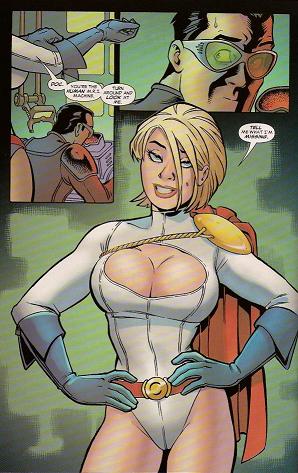 |
At this point, Power Girl is more recognizable as ‘that chick with the cleavage window’ (as my roommate has dubbed her) than as an alternate reality version of Supergirl (which he didn’t know was the case). The reason she isn’t on the full list, though, is because she’s recognizable, but not iconic. There is no great standout story involving her that most superhero fans are aware of even if they’ve never read it. Most people into the capes and tights scene are at least aware of the infamous “Supergirl is dead” cover from “Crisis on Infinite Earths,” even if they’ve never read a comic with her in it. Power Girl, who is from a universe where Supergirl grew up and changed her name to establish her own identity (but still called herself ‘girl’ instead of ‘woman’ for antiquated reasons) hasn’t had a moment that swept through the nerd circles with such force. Hopefully she’ll have that one day.
Previous Topless Robot Articles by Greggory Basore Include:
7 Reasons Why The Feud Between “Casual” and “Hardcore” Gamers is Literally Ridiculous.
10 Reasons Why An All Female Ghostbusters Reboot is the Best Possible Direction
10 Reasons Hollywood Needs to Stop Catering to Whiny Assed Nerds like You and Me
The 7 Most Amusing Reactions and Possibilities to come from Microsoft Buying Minecraft
10 Reasons I Don’t Blame Robin Williams for Wanting to Die
The 5 Most Frustrating Moments Game of Thrones Season 4 (and 5 Ways to Wait for Next Year)
The 15 Geekiest Shows of Summer 2014
8 Unanswered Questions Left by X-Men Days of Future Past
5 Lessons Hollywood Should Learn from The Lego Movie (And 5 Ways they’ll Miss the Point)
16 Heartbreakingly Awesome bits of production art that never made it to the screen.
